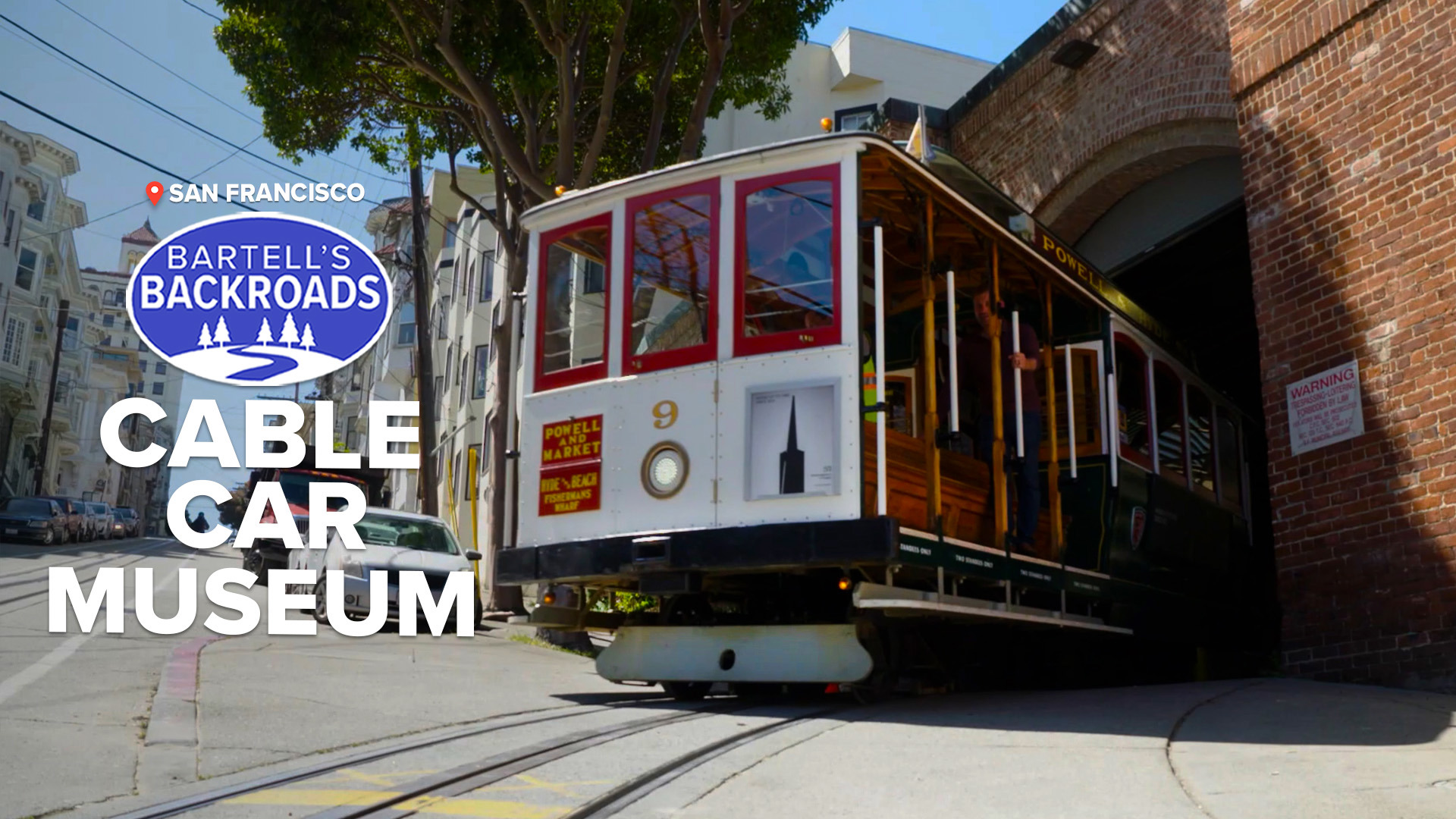SAN FRANCISCO — If the old Rice-a-Roni commercial theme song used to get stuck in your head, imagine listening to people sing it every day.
“If I had a penny for every time, I would be rich,” said Hector Godinez.
The Rice-a-Roni theme song may be iconic, but Godinez says it’s not as iconic as the cable cars he’s been operating for over 20 years.
“They’ve all got their own personalities. It is weird - a beautiful, weird feeling driving these cable cars," said Godinez.
The cable cars are one of San Francisco’s most popular and recognizable tourist attractions. Every day they take tourists up and down the city’s steep streets and past famous stops like Fisherman’s Wharf and the iconic, winding Lombard Street.
But on this trip, Godinez is dropping me off at the end of the line to meet his boss, Arne Hansen at the Mason Street Cable Car Barn and Powerhouse.
“Yes, this is the cable car barn, the only one in the world. These are also the only cable cars left. This is the only moving national historic monument,” said Hansen.
Most of the cable cars in the Barn are over 100-years-old; the oldest was built in 1887. Arne has spent the better part of his life working around these relics and takes maintaining them seriously because these are the last.
“They lost a lot in the 1906 earthquake but were able to rebuild a few,” said Hansen.
Mechanic Phetsamorn Khotpanya says some cable cars may have primitive parts, but they are safe. The cable cars undergo an extreme amount of wear and tear. Some parts, like the wooden brake pads, are replaced every two or three days and are effective and cheap.
But not all cable car parts are cheap.
Another thing that takes a lot of wear and tear are the four cables that run under the streets of San Francisco. Each one weaves through a series of pullies at constant 9.5 mph.
“They last about 100 to 150 days,” said Hansen.
When asked about the cost of a fairly hefty spool of cable several feet in diameter, Hansen says, “A roll like this costs $100,000+, sometimes more.”
TAKE A TRIP ON BARTELL'S BACKROADS:
► See an interactive map of everywhere John has visited on the backroads
► Watch all of the Backroads videos
► Follow John on Facebook
Yes, cable cars can be expensive to operate, but they also played a very important part in the early growth of San Francisco.
“Nobody built on the hills in San Francisco because you couldn’t get up there. Cable cars opened up the hills to development,” said Mark Phipps of the Cable Car Museum.
Phipps is director of the Cable Car Museum, a free museum located in the Mason Street cable car barn. Phipps says San Francisco owes a lot to cable cars and inventor Andrew Hallidie.
“Andrew Hallidie and his father owned a lot of patents for wire rope, which we call cable today,” said Phipps.
During the Gold Rush, Hallidie’s wire rope, or cable, was used to move heavy gold ore carts up and down mountains because it was durable. In 1873, Hallidie started using his cable to move people up and down San Francisco’s hills.
“It was a success from the beginning and he made a tremendous amount of money. A good return on his investment,” said Hansen.
Before long, cable car companies were popping up all over the city. For decades it was the primary way to get around until the 1940s when powerful diesel buses were introduced.
“In 1944, Mayor Lapham was elected. He was very famous and after WWII he said we needed to get with the times.”
At the time, the cable car system was falling apart and replacing them with buses seemed to be the cheapest option, but an activist by the name of Friedel Klussmann started a movement to save the cable cars, which eventually went up for a vote.
“It won 3-1. San Francisco did not want to see their cable cars ripped out,” said Hansen.
Today, cable cars remain an iconic, enduring San Francisco attraction, moving tourists from stores to restaurants across the city.
ANOTHER UNIQUE WAY TO GET AROUND ON THE BACKROADS: Ride the hillavator to a romantic dinner in Capitola...the backstory of Shadowbrook's odd people-mover.

